THE EARLY 20th CENTURY
It was up to the excavators of the 20th century to remove the earth for the last time, hoping to find parts of the city that had not been searched and elsewhere objects that had been left behind. The scientific example of Lanciani was followed and improved upon from 1907 by Dante Vaglieri. He had been excavating on the Palatine in Rome, but after a disagreement with colleagues was demoted to Ostia. He was the first excavator who lived in Ostia, a few days a week, in the castle. The castle was also still used as Antiquarium, although the important finds were taken to the Museo Nazionale Romano in Rome. His main collaborators were inspector Raffaele Finelli, architect Italo Gismondi, and - from 1912 - Guido Calza, while the French scholar Jérôme Carcopino also made important contributions.
Vaglieri was confronted with a "battlefield": scattered pits from which material had been extracted to be thrown in lime kilns or taken to private collections and museums, often without registration of the findspot and Ostian origin. The only positive thing about these early searches was that the pits had often been filled with earth again, so that at least the ruins were protected. The north-east part of the city was excavated systematically by Vaglieri, employing some 50 labourers. The work was well documented and proper attention was paid to the stratigraphy. For the removal of the earth he acquired, in 1908, a "ferrovia Decauville", a small, easily demountable railroad with mining carts, named after the inventor. Photos were taken with equipment owned by the excavators. They were probably taken by Vaglieri and Gismondi. Work was continued on the Square of the Corporations and in the Barracks of the Fire Brigade. The winged Minerva on the Square of Victoria was found, a statue that became a symbol of Ostia. Vaglieri died in December 1913, at his desk in the castle. The year before, the first significant monograph about Ostia had been published: "Ostia, Colonia Romana", by Ludovico Paschetto. It contains an overview of all earlier excavations with lists of the objects that were found. The book received strong but unfair criticism from Jérôme Carcopino, who felt that historical aspects received too little attention and noted that a treatment of Portus was missing. One gets the impression that the relationship between Carcopino and Vaglieri was somewhat tense.
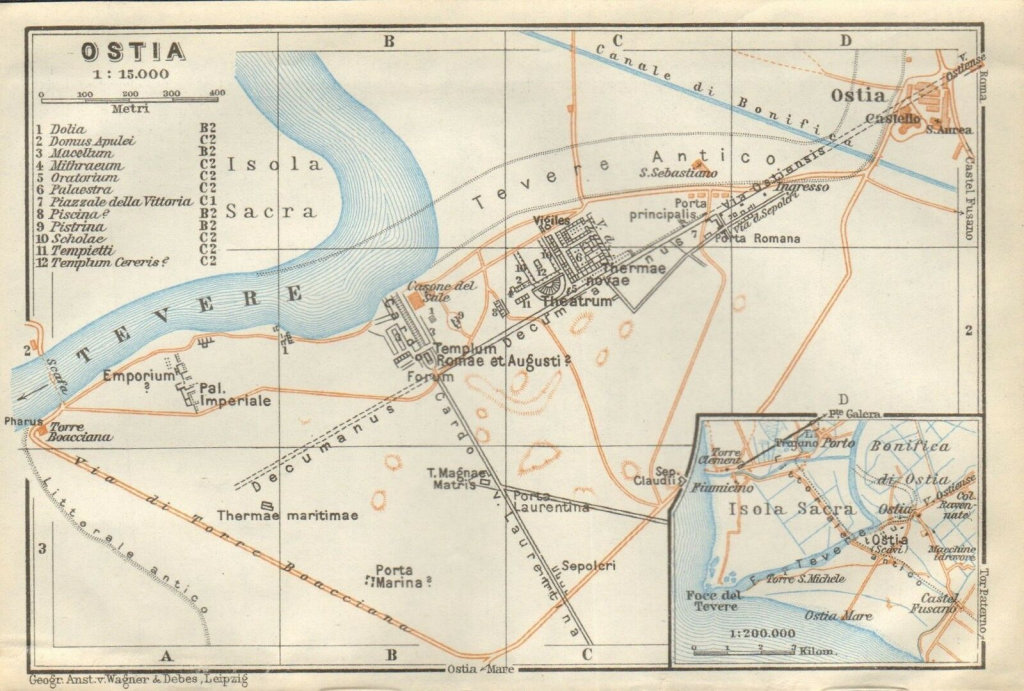
A plan of Ostia from 1909.
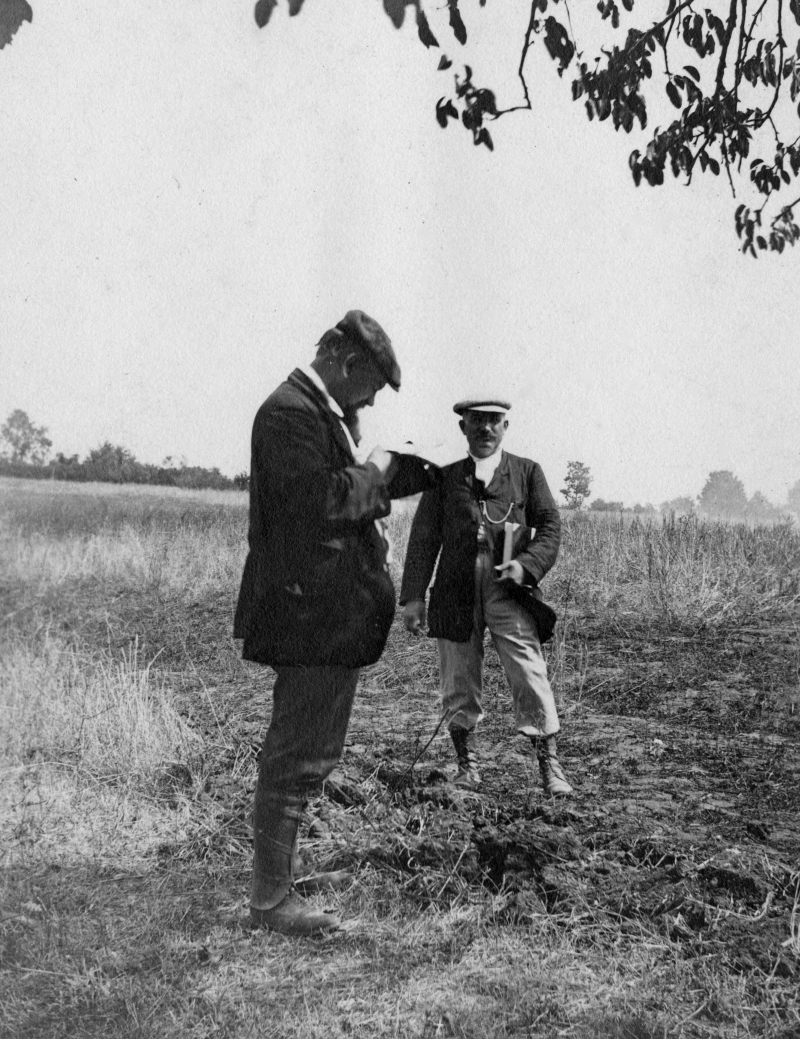
Dante Vaglieri (left) and Raffaele Finelli at work in Ostia.
Olivanti 2014, fig. 12. Archivio Fotografico Ostia, neg. P 62.
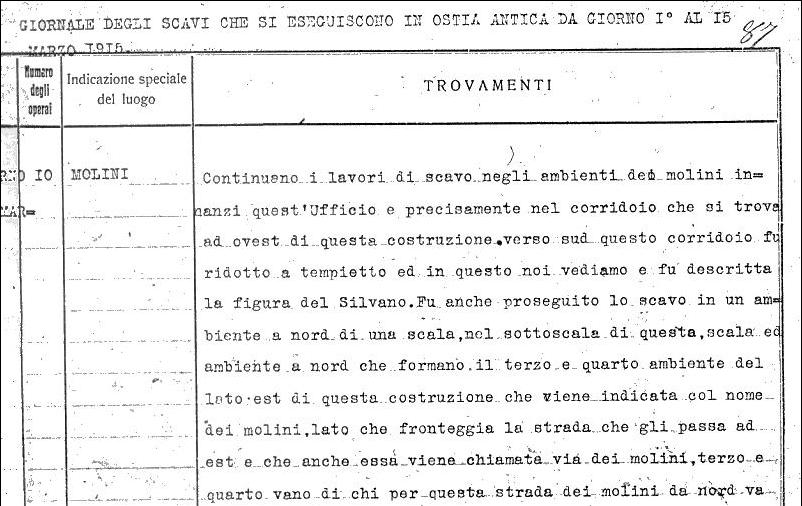
Part of a page of the Giornale degli Scavi from 1915, kept by Raffaele Finelli.
A few years earlier the diary is handwritten; Vaglieri had bought a typewriter.
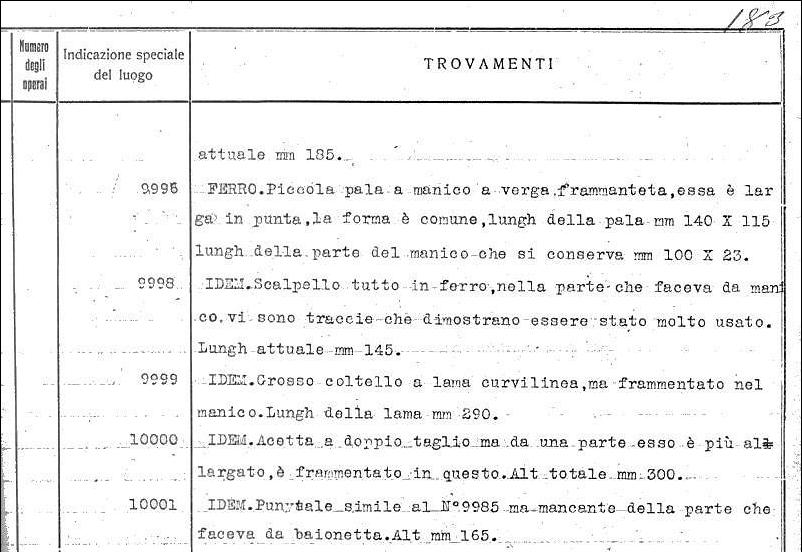
Part of a page of the Giornale degli Scavi from 1915, kept by Raffaele Finelli.
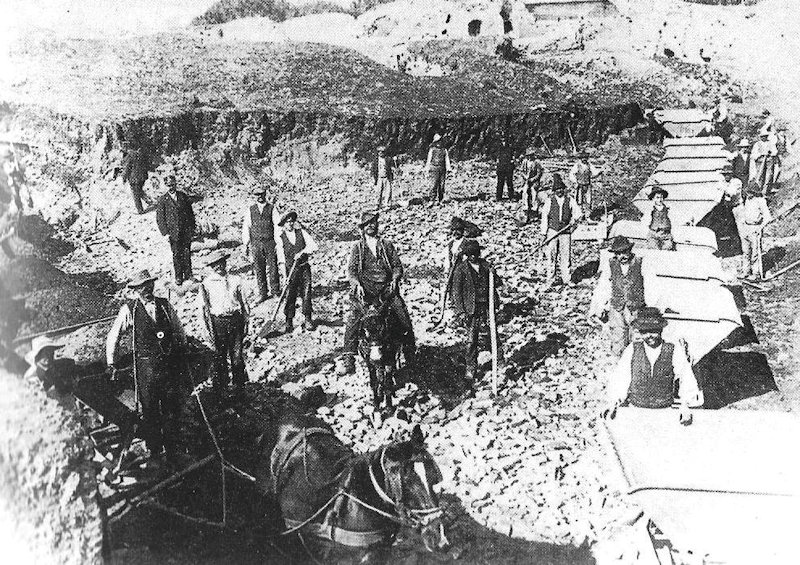
Excavations in the early 20th century using mining carts.
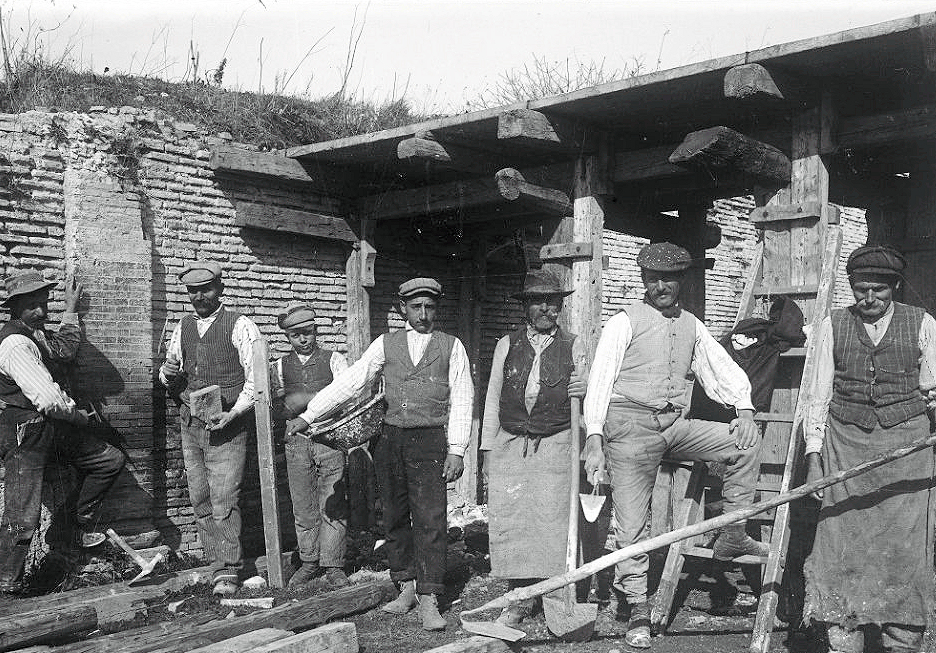
Some of the workers in the 1910's.
Photo: Parco Archeologico di Ostia Antica.